How to Manage and Handle Patient Complaints and Greviances
It’s 2020 and healthcare is now patient-centered. That means we can all hold hands and sing Kumbaya as there’s nothing to get upset over while visit a hospital or doctor’s office, right? Wrong.So, how do you handle and manage patient complaints, grievances and concerns?

It’s 2020 and healthcare is now patient-centered. That means we can all hold hands and sing Kumbaya as there’s nothing to get upset over while visit a hospital or doctor’s office, right?
Wrong.
Since the popular phrase in the UK, “no decision about me, without me,” accelerated their push towards patient-centric care their number of complaints has nearly doubled.
Sure, it’s a different country but the over-arching idea still stands. When the experience is more focused on the consumer or client, the harder it is to satisfy the masses. In other words, even though the main concept is to satisfy patients, experiences vary across practices.
One small doctor’s office up the street might have an updated and modern waiting room while another a couple of blocks further might have the latest technology to speed up the waiting process.
Both places tackle the personal approach to healthcare in different ways. But, even though they’re both awesome ideas, they won’t satisfy everyone. Thus, the end result is patient complaints.
My point after all of this is that, as a healthcare provider you can’t satisfy all of your clients with how you approach their care and they’ll let you know.
So, how do you handle and manage patient complaints, grievances and concerns?
Sift Out The Minor Complaints
There are thousands of reasons why a patient might complain about your organization. According to Becker’s Hospital Review, the top five most common reasons that upset healthcare clients are…
- Sleep deprivation
- Noisy nurses' stations
- Losing personal belongings
- Staff not knocking before entering the room
- Not keeping whiteboards updated
Some of these are more minor than others. Personally, I’d be much more upset over losing my cellphone while at a hospital than not getting a knock on my door before the doctor comes in.
But, everyone is different and maybe someone heavily values a courtesy knock so that they don’t get startled or have time to prepare for the appointment.
Unfortunately, you don’t have time to hear every complaint that comes into your office as a physician. You barely have enough time keeping your head above water between holding appointments, talking to insurances, and managing your electronic medical records (EMR) system. Any time you spend dealing with a concern takes more time away from performing your main duty as a physician.
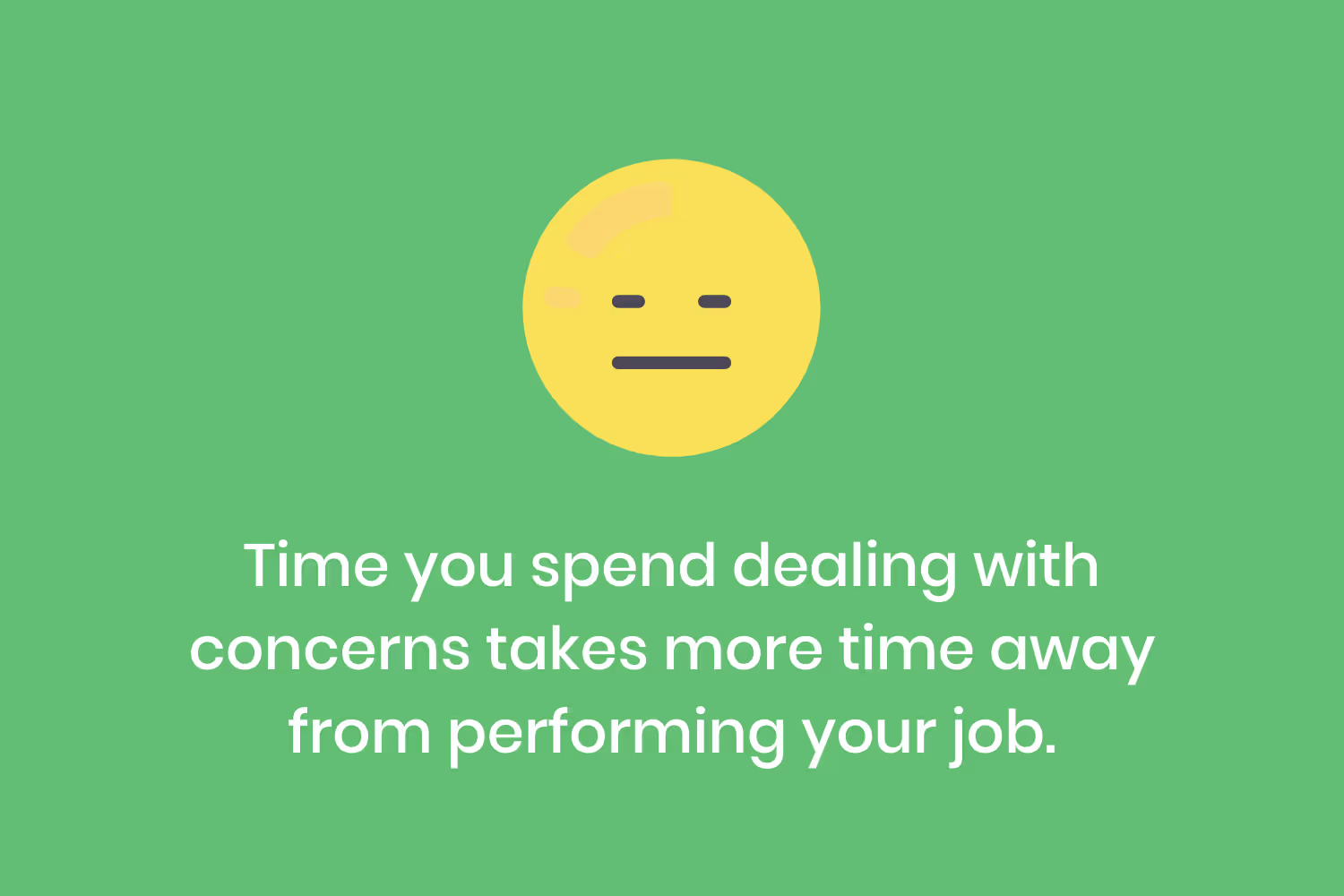
So, before I dive into how to handle in-person grievances or concerns we need to layout the best way to manage those that are less pressing.
Have you ever gone to a restaurant and seen those tiny, perforated slips of paper glued into a notepad near the cash register that asks, “How did we do?” They’re an old school form of managing patient complaints.
Nowadays, the only way you’ll find these sheets is after purchasing, looking on the back of your receipt, going online to the URL listed and completing it in the form of a “Feedback Survey.” Places like restaurants purposefully make it hard for their customers to find them because the only “feedback” most of them get is in the form of a complaint.

So, what is there to learn after all of this?
First, offer an official document, form, or survey and direct those who have smaller grievances to it. Second, choose how you’ll make it available to your clients. You can print them out and place them near your front desk, offer them as a form on your website and/or do both. What’s most important is that your patients know where to go in the event that they’re unsatisfied with your services. Finally, put a positive spin on the form. Instead of calling it a “complaint form” use options and scales that are on both sides of the spectrum. That way it quantifies dissatisfaction into a number form, making it easier to review.
However, you don’t want to follow what restaurant chains do to gather feedback to a T. In other words, don’t make it hard for your patients to find where to submit a complaint privately to your organization. If you do that, they’ll end up complaining and leaving a rating on a public form like Google or Yelp, but those places are where you want your good reviews to land.
Be Proactive, Not Reactive
You could just not acknowledge the fact that patient complaints are even a thing and go about your days pretending like one won’t happen, that’s a reactive approach. The problem with this strategy is that it doesn’t prepare you for facing a grievance when one eventually comes your way. You’ll have to think on your feet in the moment and pray that you can remedy the situation.
A reactive approach isn’t a good way to handle patient complaints. Instead, be proactive.
In other words, don’t wait for your patients to come to you with their gripes. Ask them how you’re doing and how they’re feeling constantly.
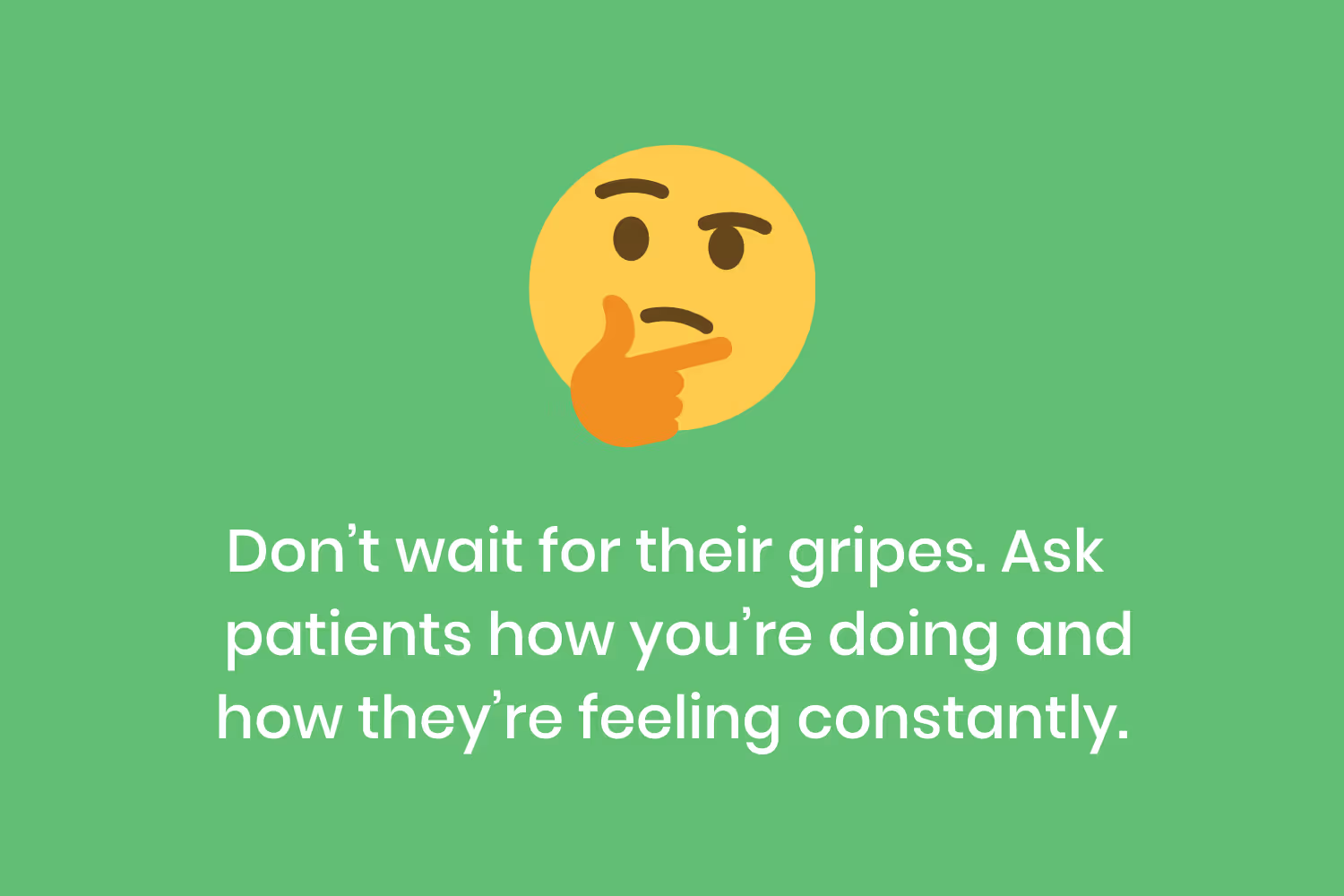
First, after introducing yourself ask them how they felt about your front staff when you enter their room for their appointment. Second, continue to feedback process by asking them about their thoughts on your procedure. Third, have your staff encourage further comments during the check-out process. Fourth, either direct them to your comment card or online form on their way out. Finally, you could even send them a feedback survey as an email or SMS message a few days after their appointment.
You might think that this process is a little over-the-top but it works because its a process that encourages any concerns and ensures that your staff is ready to remedy them at a moment’s notice.
Some of your patients will let you know how they feel as soon as there’s an issue, others might not feel comfortable sharing their concerns in person. The fact is that, like in the commercial space, there are different types of clients.
According to a study produced by the University of Florida, there are five different types of complainers…
- The Meek Customer: Doesn’t complain. Instead, leaves and doesn’t come back.
- The Aggressive Customer: Says whats on thier mind loudly. They don’t respond to excuses or reasons why the product or service wasn’t what they expected well.
- The High-Roller Customer: Always expects the best service and doesn’t care about how much it costs. They make reasonable complaints. They’re interested in results and how the problem was handled.
- The Rip-Off Customer: They don’t care about getting the complaint resolved. Instead, they want to win by getting awarded something that extra. These are the type of customers who say “not good enough” as a response.
- The Chronic Complainer Customer: Never happy with the end result of a product or service. They’re always complaining and letting the company know how they feel.
Of course, this study looked at the business-to-consumer space. But as the healthcare industry continues to be more patient-centric, the line between patient and consumer blurs.
By implementing a proactive approach to handle complaints, grievances and concerns you’re encouraging feedback which inadvertently improves your experience and makes your services better. After all, 77% of consumers view companies more favorably if they’re proactive and invite feedback.
Look For Patterns
Your organization isn’t perfect. Even when you address grievances there’s still room for improvement.
However, patient complaints give you a direct indication of the areas in your organization that need improvement.
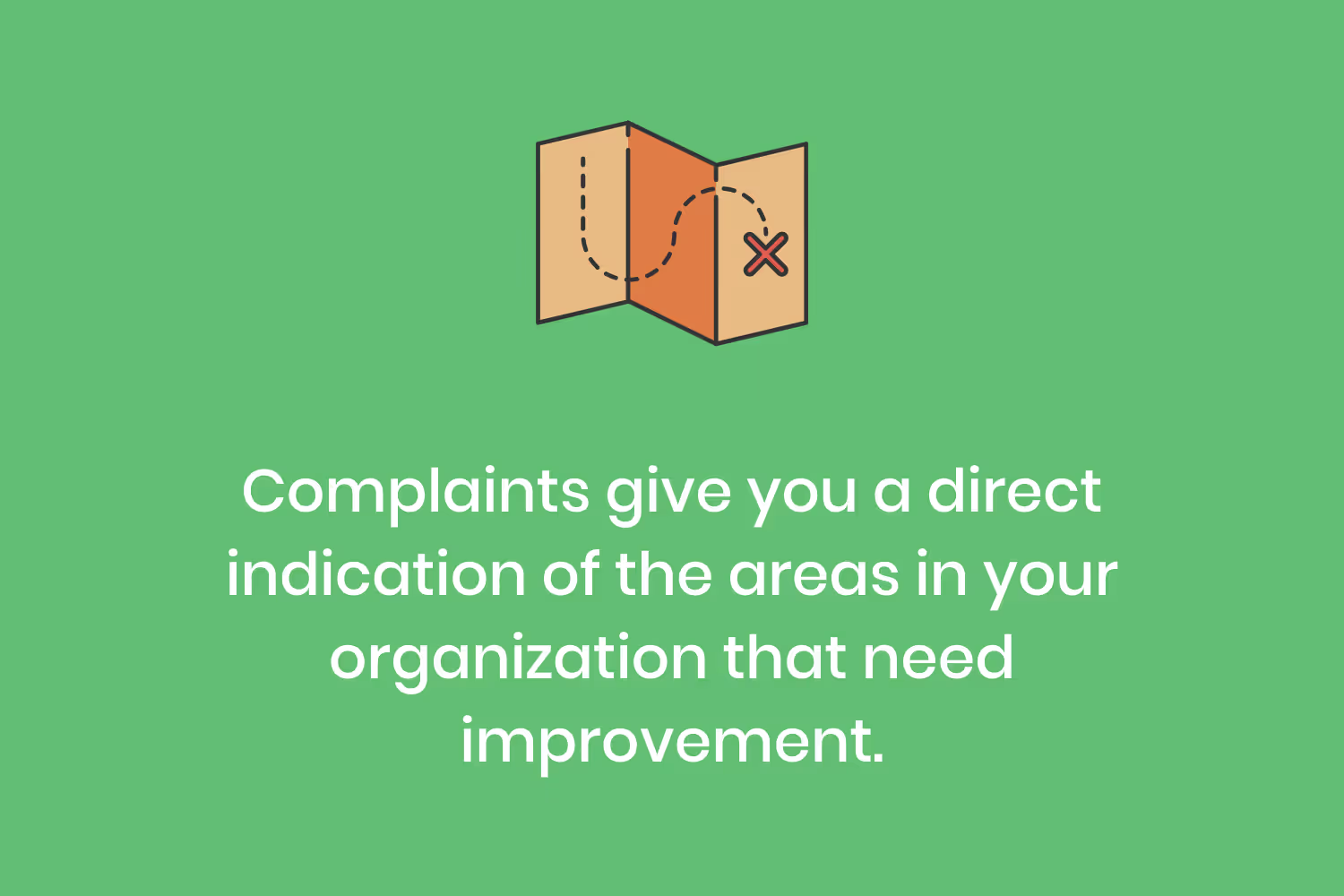
For example, if you find that the majority of the complaints you receive talk about how they have to wait way too long for their appointment, that’s a clear indication of an area that you need to address.
64% of American consumers contacted some form of customer service in 2017. In other words, the majority of people give feedback and you can use it to improve on how your business functions.
Record The Meaningful Ones
Now that we’ve determined that it’s important to find a pattern in your patient complaints, we should mention the importance of recording them.
In order for your team to find any patterns in the grievances you receive, there needs to be a history or point of reference that they can review.
Since you work within the healthcare space, your team is already used to documenting and recording information on a daily basis. In other words, recording complaints shouldn’t be that much of an added responsibility.
Where or what you use as an organization to house all of the grievances you receive is ultimately up to you. However, it doesn’t have to be in any fancy, cutting-edge CRM software. You can make a master spreadsheet and have your team record complaints as they come in.
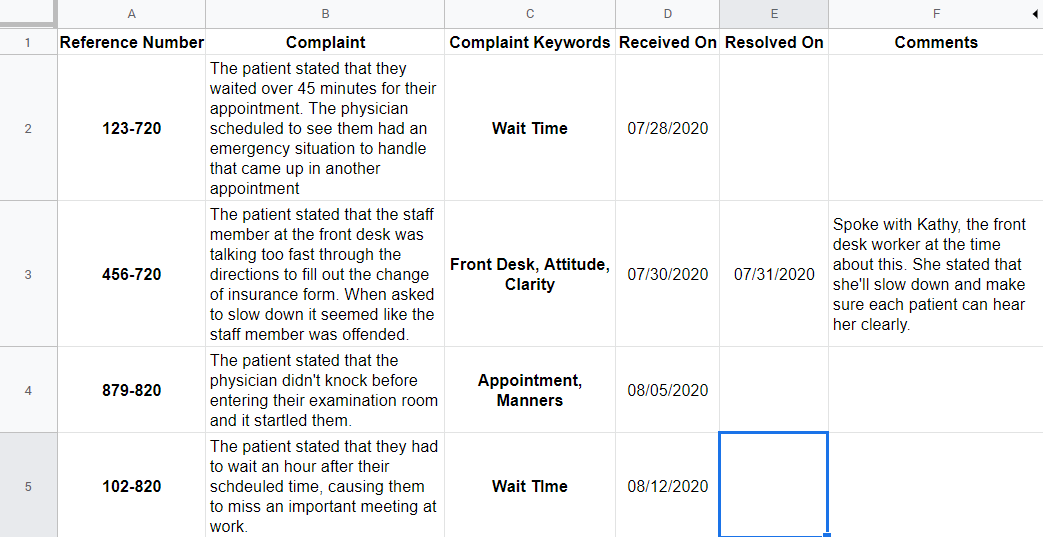
It took me five minutes to create the spreadsheet above and it’s formatted well enough to be an effective place for your organization to boost your patient complaint management efforts.
If you go this route, I recommend using Google Sheets so that multiple team members can collaborate within it. It eliminates the problem of getting lost in versioning.
When recording complaints, ensure that there is a process in place. If you’re housing them within a document like Google Sheets, do not include any identifiable information of your clients. If you record any sensitive data in something that’s not encrypted, you risk facing a HIPAA violation.
Train Patient Service Superstars
By now we know it’s important to ask for feedback, provide multiple areas where patients can send you their complaints directly, and that you should record significant ones internally. Next, we need to talk about how to handle a face-to-face grievance.
Think about a bad customer service experience you’ve had before. Calling a cable company probably comes to mind. That’s because utilities are among the top 3 industries with the worst experiences on average. Number 1 on that list is healthcare, but you’re already in the minority since you’re actively reading this blog post.
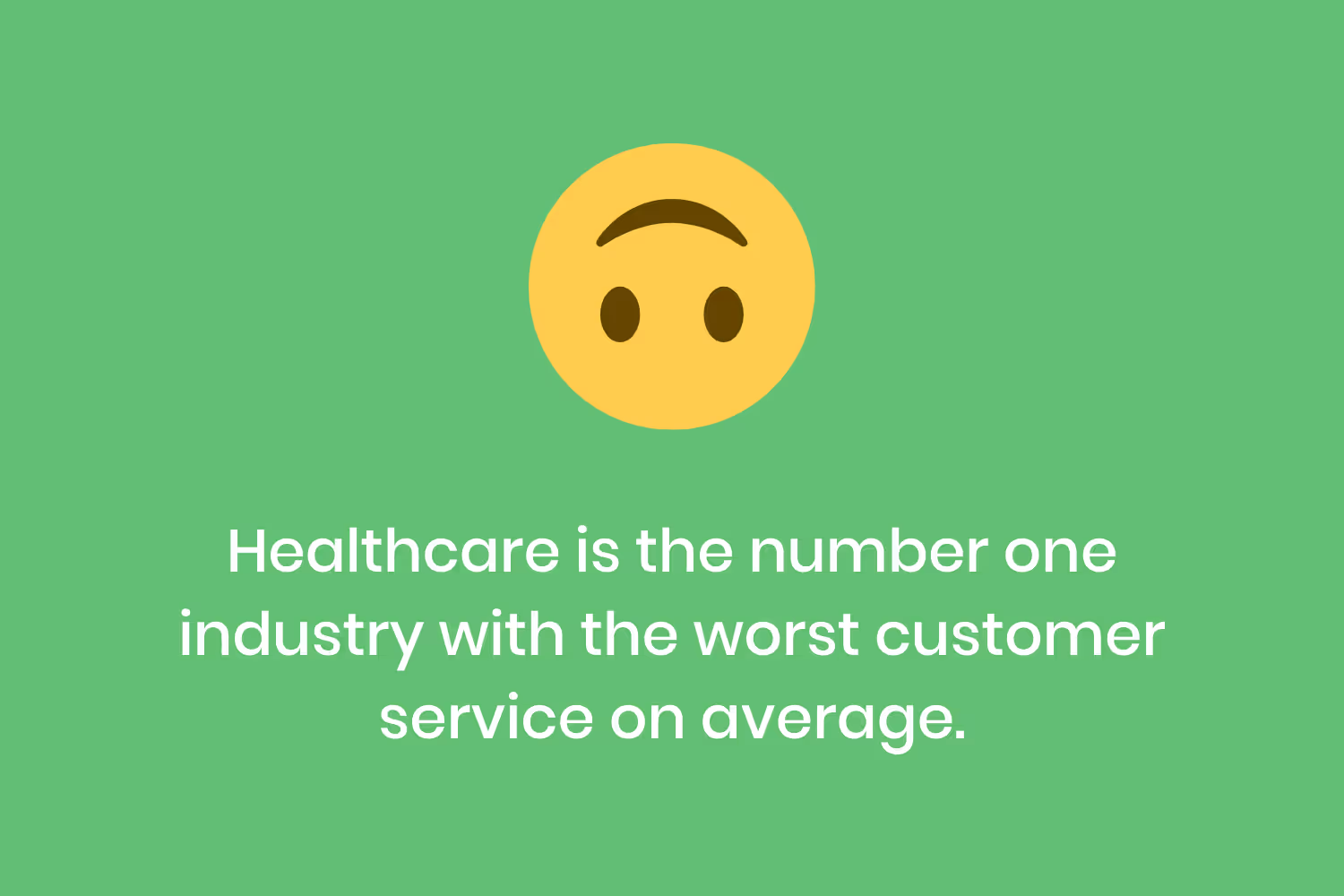
What does customer service look like with utility companies?
- Robotic directory calls where they ask you something, you reply and it doesn’t understand you.
- Finally getting ahold of a representative only to have them ask you passive-aggressive questions like, “is it plugged in?”
- Asking for level-2 and getting placed on hold for another 45 minutes while your call bounces across departments until they find someone available.
How do you feel after these calls? If you’re like me, you’re irritated, frustrated and need to take a few minutes to yourself.
Conversely, what does a good customer service experience look like?
It’s one where the representative connects with you quickly, doesn’t take your problem personally, listens to what you’re saying, solves your issue fast and adds a touch of personal pizzazz.
Amazon is famous for providing a great customer service experience, even though their live chat.

If you can imitate or capture anything remotely close to the experience provided above at your practice, you’re ahead of the game.
However, training your employees on the different facets of providing great patient service takes time. Host training sessions with them regularly to go over and provide different examples of how they should handle complaints, grievances and concerns.
That way, they’ll instinctually provide a great experience even when faced with criticism.
Conclusion
The only thing that’s more certain than the fact that clients will make appointments with your healthcare organization is that some of them will eventually complain.
But instead of shying away, embrace them.
Not only should you ask for feedback constantly throughout your scheduling, check-in, appointment, and payment process but you should make it easy for your clients to locate where they can submit them to you as well.
The average American tells 15 people when they’ve had a poor experience and there’s no real way of tracking that. In other words, if you ignore complaints, grievances and concerns you’re losing business without even knowing it.
But if managed and handled correctly you’re satisfying disgruntled clients, saving the external reputation of your organization and enhancing how your practice runs.
Emphasize your product's unique features or benefits to differentiate it from competitors
In nec dictum adipiscing pharetra enim etiam scelerisque dolor purus ipsum egestas cursus vulputate arcu egestas ut eu sed mollis consectetur mattis pharetra curabitur et maecenas in mattis fames consectetur ipsum quis risus mauris aliquam ornare nisl purus at ipsum nulla accumsan consectetur vestibulum suspendisse aliquam condimentum scelerisque lacinia pellentesque vestibulum condimentum turpis ligula pharetra dictum sapien facilisis sapien at sagittis et cursus congue.
- Pharetra curabitur et maecenas in mattis fames consectetur ipsum quis risus.
- Justo urna nisi auctor consequat consectetur dolor lectus blandit.
- Eget egestas volutpat lacinia vestibulum vitae mattis hendrerit.
- Ornare elit odio tellus orci bibendum dictum id sem congue enim amet diam.
Incorporate statistics or specific numbers to highlight the effectiveness or popularity of your offering
Convallis pellentesque ullamcorper sapien sed tristique fermentum proin amet quam tincidunt feugiat vitae neque quisque odio ut pellentesque ac mauris eget lectus. Pretium arcu turpis lacus sapien sit at eu sapien duis magna nunc nibh nam non ut nibh ultrices ultrices elementum egestas enim nisl sed cursus pellentesque sit dignissim enim euismod sit et convallis sed pelis viverra quam at nisl sit pharetra enim nisl nec vestibulum posuere in volutpat sed blandit neque risus.

Use time-sensitive language to encourage immediate action, such as "Limited Time Offer
Feugiat vitae neque quisque odio ut pellentesque ac mauris eget lectus. Pretium arcu turpis lacus sapien sit at eu sapien duis magna nunc nibh nam non ut nibh ultrices ultrices elementum egestas enim nisl sed cursus pellentesque sit dignissim enim euismod sit et convallis sed pelis viverra quam at nisl sit pharetra enim nisl nec vestibulum posuere in volutpat sed blandit neque risus.
- Pharetra curabitur et maecenas in mattis fames consectetur ipsum quis risus.
- Justo urna nisi auctor consequat consectetur dolor lectus blandit.
- Eget egestas volutpat lacinia vestibulum vitae mattis hendrerit.
- Ornare elit odio tellus orci bibendum dictum id sem congue enim amet diam.
Address customer pain points directly by showing how your product solves their problems
Feugiat vitae neque quisque odio ut pellentesque ac mauris eget lectus. Pretium arcu turpis lacus sapien sit at eu sapien duis magna nunc nibh nam non ut nibh ultrices ultrices elementum egestas enim nisl sed cursus pellentesque sit dignissim enim euismod sit et convallis sed pelis viverra quam at nisl sit pharetra enim nisl nec vestibulum posuere in volutpat sed blandit neque risus.
Vel etiam vel amet aenean eget in habitasse nunc duis tellus sem turpis risus aliquam ac volutpat tellus eu faucibus ullamcorper.
Tailor titles to your ideal customer segment using phrases like "Designed for Busy Professionals
Sed pretium id nibh id sit felis vitae volutpat volutpat adipiscing at sodales neque lectus mi phasellus commodo at elit suspendisse ornare faucibus lectus purus viverra in nec aliquet commodo et sed sed nisi tempor mi pellentesque arcu viverra pretium duis enim vulputate dignissim etiam ultrices vitae neque urna proin nibh diam turpis augue lacus.


.avif)

